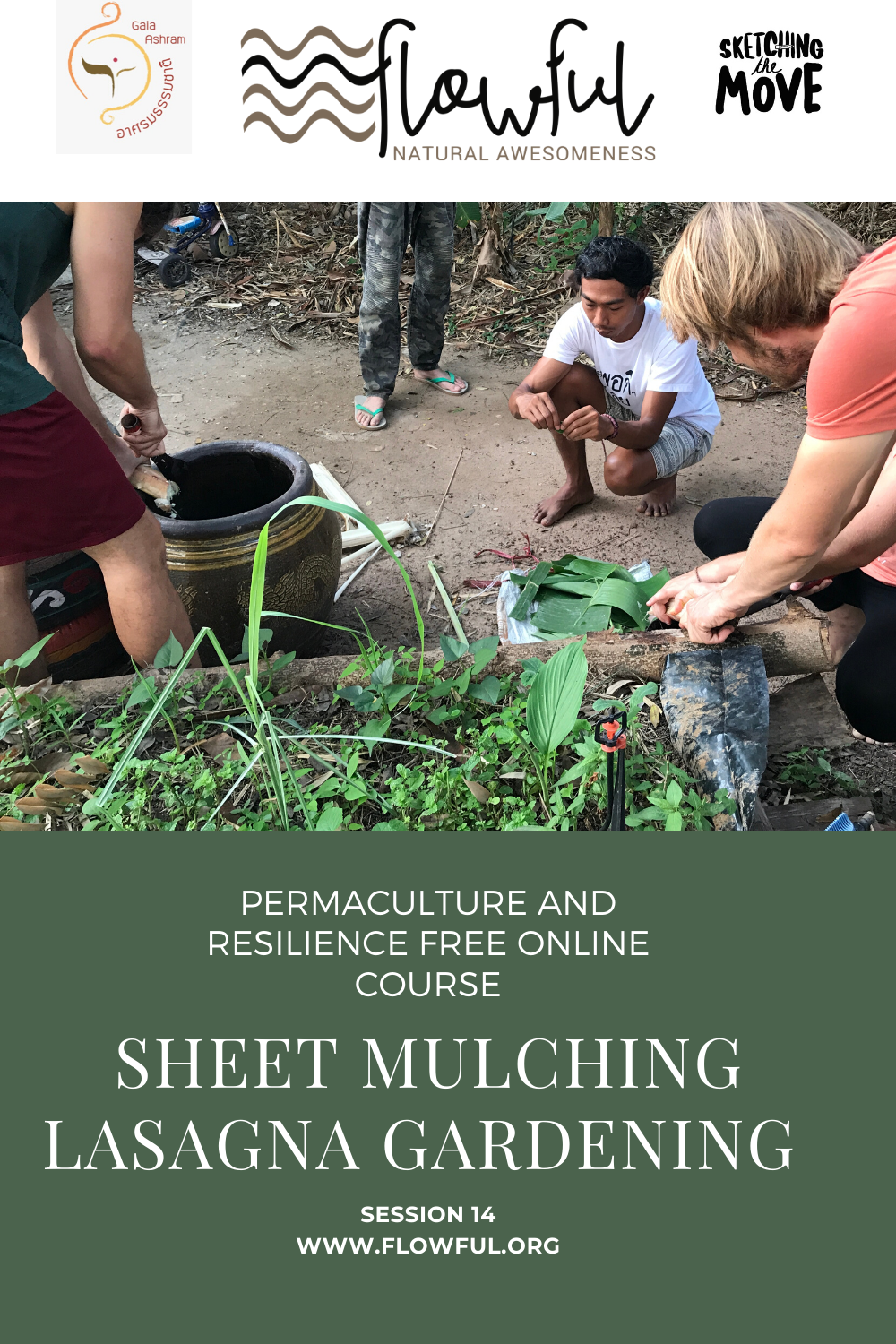Session 14: How to do Lasagne Garden step by step (No-dig gardening)
COVID-19 Community Resilience & Permaculture Course
Session 14:
Implementing a permaculture classic
How to do a lasagne/sheet layering garden bed
Vegetable gardening is one part of the entire permaculture cosmos and it is key for increasing resilience. After two overview sessions on different garden beds we will have a dive deep session on lasagne/sheet layering garden beds. After finishing this session you will be introduced to:
Concept of no-till garden
Sheet mulching or lasagne garden beds
5 Steps to make a lasagne garden bed
Different layers
Advantages and disadvantages of sheet mulching, lasagne gardening, and no-dig-methods.
To get the full experience about garden beds let’s jump back to
Session 13 Vegetable garden beds Part 2
Session 12 Vegetable garden beds Part 1
or look at Session 4 How to Implement a Hugelkultur garden bed
Video for Session 14 Implementing sheet layering garden bed
(no-till)
Share, like and subscribe so more people will be reached, thank you!
Sheet mulching or lasagna gardn beds
Sheet mulching or lasagna garden beds are a no-dig / no-till gardening method. These different names have the same concept behind them. The main idea of this technique is it supports the gardener to obtain a yield while enriching the soil. The lasagna gardening permaculture method follows the concept of “no-dig, no-till” that results in healthy, rich, and fluffy soil.
No-dig garden beds by Sketching the Move
What is no-dig, no-till?
For many gardeners tilling garden beds feels kind of normal and necessary to aerate the soil and mix newly harvested compost or other organic matter into the soil before starting the growing season. No-dig / no-till gardening comes from a different perspective.
It is an organic gardening style that actually aims to work alongside the natural processes of your garden and reduce your own interaction with planting and harvesting. The no-dig / no-till method is based on mimicking nature.
When you have a close look at a forest floor, for example, you will see that the soil is rich, healthy, and fluffy - a perfect medium for planting. This works without humans as the soil-food-web takes care of mixing organic matter into the top-soil while simultaneously aerating the soil.
Least changes for big impact
No-dig gardening is actually doing the same: It aims for minimal disturbance of the soil so that the natural process (similar to the forest) can be preserved.
It follows the permaculture principle, "least changes for big impact." It is one of the least destructive methods to enrich the soil and obtain a yield. An added bonus is it also requires very little work from the gardener.
This allows the soil-food-web with its natural organisms to thrive. Examples of these organisms that are forming the soil-food web are fungus and bacteria. In one hand of healthy soil, you have more microorganisms than people living on this planet.
By using a no-dig garden approach you are not disturbing the positive and highly needed interrelationships of the different organisms. We will cover the soil-food web in one of the next Sessions in more detail. For a first overview about soil, we can highly recommend to check out Session 6 about the “Basic of Soil” to get some more details about the magic that is happening in our soils and why it is so important to regenerate the soil.
Sheet mulching or lasagna gardening in short
In short, sheet mulching or lasagna gardening refers to the method of building garden beds by adding layers of organic materials that will “decompose” over time, resulting in nutrient-rich soil that will support the plants around. It follows the idea of a no-dig garden as you are adding material establishing a soil-food web that is turning and mixing the different layers into healthy and rich topsoil.
By adding more organic matter you support the aeration of the soil without tilling. Due to the different layers, it is a perfect tool to turn lawns or grasses into a garden. It is a great pioneering technique as you are building new topsoil on top of the existing compacted or poor soil.
Also known as sheet composting, lasagna gardening is beneficial for the environment because you're turning yard waste, kitchen scraps, and anything else you'd add to a normal compost pile into organic fertilizer to grow new plants.
What do you need?
Tools: Water hose and a garden hoe
Materials: non-printed cardboard, brown organic matter such as shredded newspaper, twigs, old leaves etc and green organic matter such as grass clippings, leaves, fruit and vegetable scraps, coffee grounds, and tea leaves/bags.
5 Steps to establish your no-dig garden bed
Placement of the garden bed
If you are starting a new garden bed, place it optimally for vegetable growth (check here for more information). Keep access in mind. Make it easy for you to reach the entire garden bed from the path, so you don’t have to step on the soil (As doing so would compact the soil). it. For edging, you can use old wood, timber, or stones. You can also speed up the process by water the ground on which you are about to establish your no-dig garden bed. is highly recommended to water between each and every layer to start the decomposition process.Edging and preparation
The main idea is do not take out existing ground cover such as grass, weeds, etc. However, it is important to protect your new vegetable plants and reduce the competition for nutrients, sun and water while increasing organic matter in your garden bedsit by turning the current growth into the soil. If you have a lot of weeds in your existing garden bed, maybe because o you start a garden on your lawn or just somewhere new, an easy way of suppressing weeds and grass is to start your garden bed with a thick layer of cardboard (non-printed cardboard is best). This layer is beneficial not only because it will suppress existing plants by taking oxygen and sun, but also because the cardboard is attractive to earthworms. After laying down this layer, water it again.
Adding the layers
The rules for successful lasagna gardening are similar to any form of composting: The materials must be slightly moist to encourage decomposition but not so wet that they rot. The 5 different layers used in this method work together to create rich and fertile soil over time while also giving you the possibility to contain a yield from the very beginning.Cardboard
Brown material such as leaves, shredded newspaper, etc.
Green material such as kitchen waste, garden and grass clippings
Compost or topsoil
Mulch
The brown and green layer mimicks the composting effect and ensures the nitrogen to carbon ratio. Adding compost or topsoil as a fourth layer ensures good growing conditions for the new plants. Mulch as a final layer suppresses new weeds, keeps moisture in the soil, and reduces soil erosion. To manage moisture content, water between the different layers if needed.
Get your plants in
If you want to plant right away, no worries. Just work with fertile pockets supporting your plants or seeds. Simply dig down into the bed as you would with any other garden, add some top-soil compost mix, and plant your seedlings or seeds. You can also wait for your garden to break down enough for planting. The time this takes will vary depending on conditions, but once the materials have decomposed into a uniform layer of loose compost-like material, the entire garden bed is ready to plant.Maintain soil fertility
Establishing new garden beds is just the first part. In order to work with energy-efficiency (and that’s what we want to do in Permaculture), it is key to maintain the garden bed and also soil fertility.Depending on your plants, it is good to add new layers on a regular basis to keep the soil fertility high. You can also work with the intercropping method or living mulch in between your main crops to naturally keep your fertility high. This is up to you.
A mix of both works best for me. For example, whenever there is space after harvesting, I add a layer of browns and greens, and between the growing cycles I add living mulch to cover the soil and add nutrients and organic matter to the soil.
Advantages and Disadvantages
Advantages: Fewer weeds, thanks to the newspaper or cardboard suppressing them from below and the mulch covering the soil from above. Better water retention, as the compost layer holds water more effectively than regular garden soil A high amount of organic matter will boost your existing soil-food web
Disadvantages: At first, you are not working with the existing soil. Instead you are creating a layer of new and good soil on top of the existing soil. Thus, it might take some time before the ratio of organic matter in the initial top-soil will increase.






